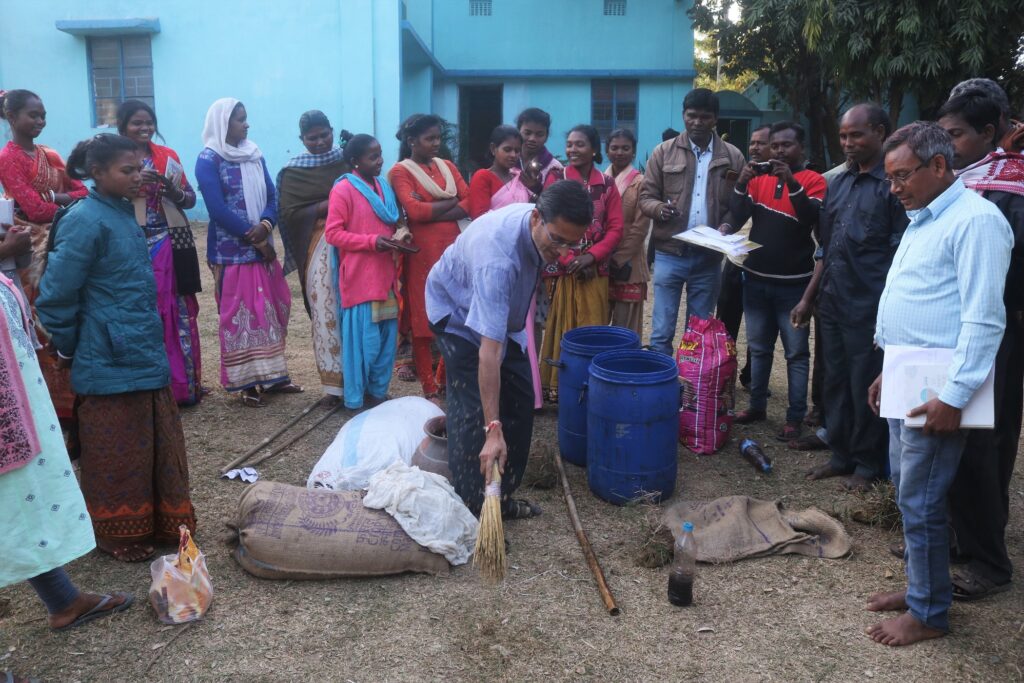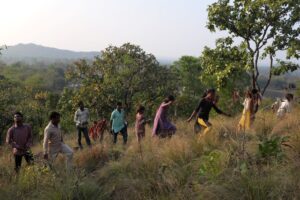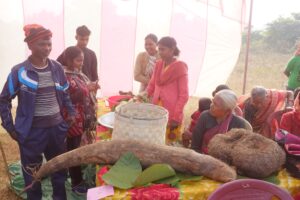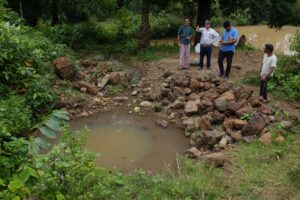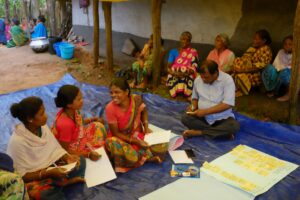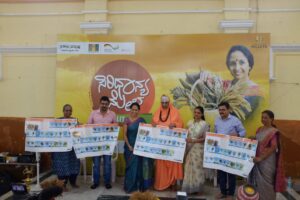On the 14th and 15th of December 2022 a two-day Awareness cum training program on Ecological Agriculture and associated practices was organized at the premises of Paryavaran Chetna Kendra (PCK) at Potka, East Singbhum District, Jharkhand. The training was conducted by Soumik Banerjee, and involved community fellows, partner representatives and farmers from Manoharpur Block and Noamundi Block West Singbhum District, Saraikela Kharswan District, Musabani and Potka Blocks of East Singbhum District Jharkhand and Purulia District West Bengal. A total of 36 participants comprising of 18 men and 18 women, attending the training program. All of Keystone Foundation’s projects being implemented in the region were represented at the program namely the Using Diversity project, the Eastern India initiative and PNF GAGGA fellowships.
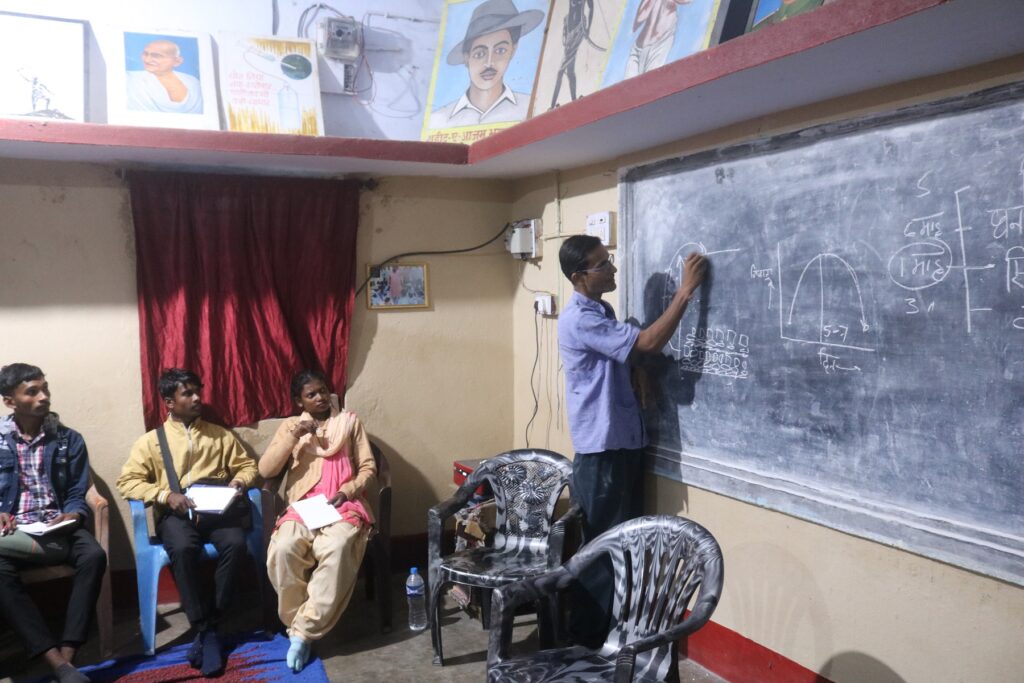
After a round of introductions Soumik Banerjee made a presentation on Natural Systems and the processes found in nature. Sharing a breathtaking image of the Amazon rainforest he pointed out that the Amazon Rainforests produce 8800 kcal from every square meter and in comparison, our agricultural fields that produce less than 1000 Kcal/sqm. He presented an illustration of the forest food web highlighting how every organism has a role to play in forest ecosystems. He emphasised the fact that 70% of crops are pollinated by bees and also gave the example of Mahua flowers being pollinated by bats. He said that if we increasingly use chemicals for agriculture bees and other natural pollinators will die and subsequently trees and plants that depend on them for pollination will also disappear from our areas. He illustrated how forests provide food at every layer. He shared photographs to highlight how the Fallow Forest Food landscape for the Paharia people of Sundar Pahari is distributed across 6 dimensions providing edible plants, fruits, vegetables, stalks greens, seeds, kernels, tubers, roots etc. round the year. He presented how soil health ensures plant health and also how plants feed on elements from the atmosphere. He also delved in detail into soil and what it is made up of. He shared that “The Living Soil is an extraordinary Biotope of organisms; it contains a billion microorganisms per gram, sheltering the largest part of living biomass on earth. These organisms are at the base of all biological process driving the Circle of Life.” He stressed that without these organisms’ soil would be lifeless dust. He presented the Soil Food Web and illustrated the different organisms found at the various trophic levels describing the roles they all play in ensuring soil health. Graphic illustrations depicted the exchange of resources between plant and soil and also highlighted the role of Mycorrhiza in enabling plants to access nutrients and water bend the span of the plant’s root system. Soumik ended with a comparison between Chemical dependant food production and natural regenerative systems. One of the major features of Chemical agriculture which he pointed out was that it was heavily dependent on water availability as in this system nutrients are absorbed as simple ions from soil water solution. As a consequence, chemical agriculture is extremely difficult to carry out successfully in areas of water scarcity. Since most of the areas and lands where the participants came from suffer from water scarcity Soumik highlighted that chemical agriculture was not viable in these areas.
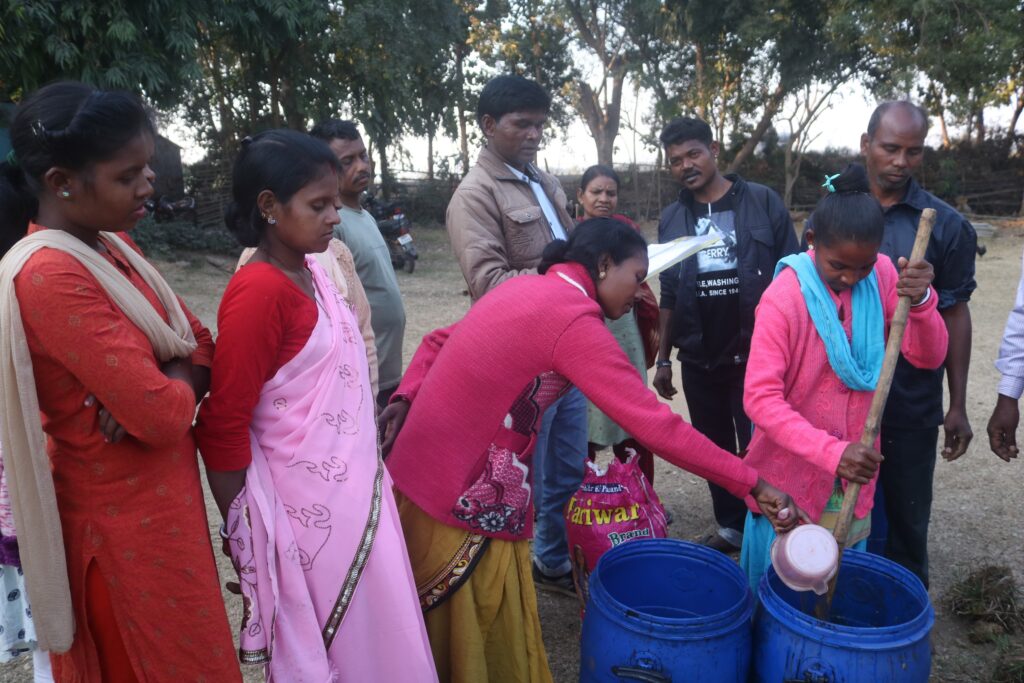
The participants shared experiences from their areas regarding the gradual shift away from traditional agricultural to increased use of chemical inputs and they also raised questions that they had regarding the presentation. This was followed by practical demonstration on the preparation of two organic fertilisers – Jeev Amrit and Ghan Jeev Amrit. These organic fertlisers make use of locally available ingredients like cow dung, cow urine, jaggery, besan / chickpea flour, mud from termite mounds and water. In addition, a 200-litre drum, jute sacks and a broom to scatter the preparation. Soumik demonstrated the preparation of these 2 organic fertilisers for 1 acre of land with participants then forming groups to prepare the fertilisers themselves. Jeev Amrit takes around 3 to 5 days to prepare and should be used within 15 days. Jeev Amrit can be used to prepare another organic fertiliser – Ghan Jeev Amrit which is a mixture of cow manure and Jeev Amrit and takes 2 to 3 days to prepare and can be stored for 6 months. All participants enthusiastically took part in the preparation of the fertilisers and even experimented with scattering jeev amrit using a bamboo broom. Soumik ended the day with a discussion on how these fertilisers are far more cost-effective than their chemical counterparts as they depend primarily on locally available ingredients with the 20 drum probably being the only item the farmers need to purchase, but even for this an old container could be repurposed. More importantly these organic fertilisers don’t negatively impact the soil in the long run unlike chemical fertilisers.
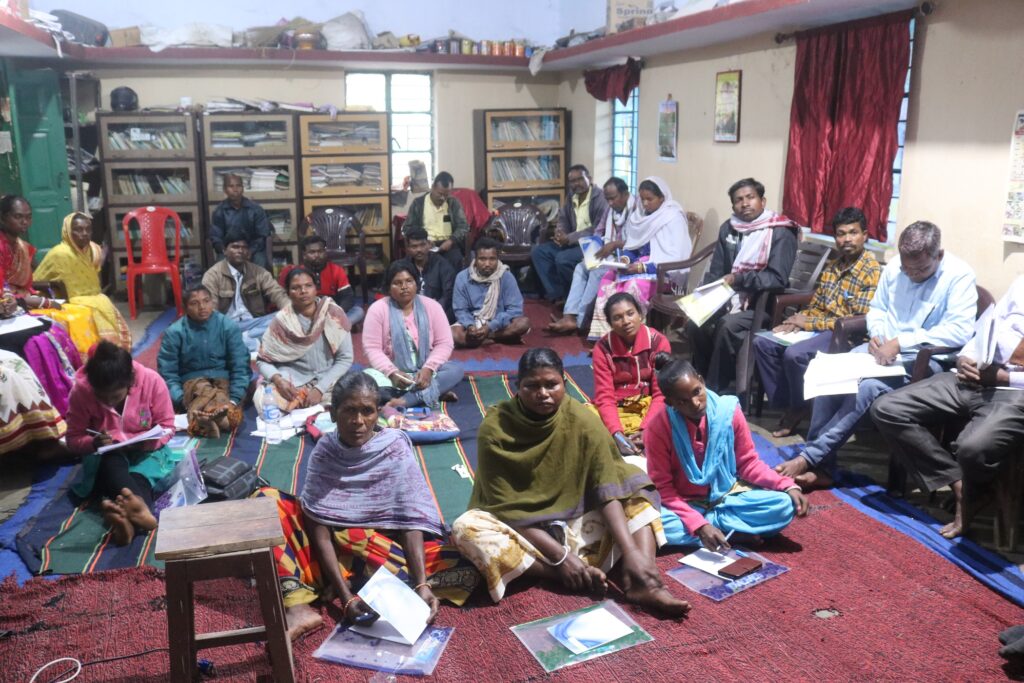
The second day commenced with a recap of the previous day with participants sharing what they had learned and different aspects regarding the preparation and use of Jeev Amrit and Ghan Jeev Amrit. This was followed by practical demonstration of the preparation of two organic pesticides. The first Paanch Patta Akra / Five Leaf Extract involved the use of any 5 toxic leaves that either livestock don’t eat or from which release milk when broken. While it is not mandatory to have 5 different leaves there should be at least 3 different kinds of leaves to ensure effectiveness of the preparation. This pesticide takes 3 to 5 days to prepare and should be used fresh as it loses its potency if stored. The ideal time to spray this mixture on plants is in the evening in the absence of strong winds and rain. All kinds of insects can be kept under control with this pesticide, and it should be sprayed every 15 days as a preventive measure to protect against insect attacks.
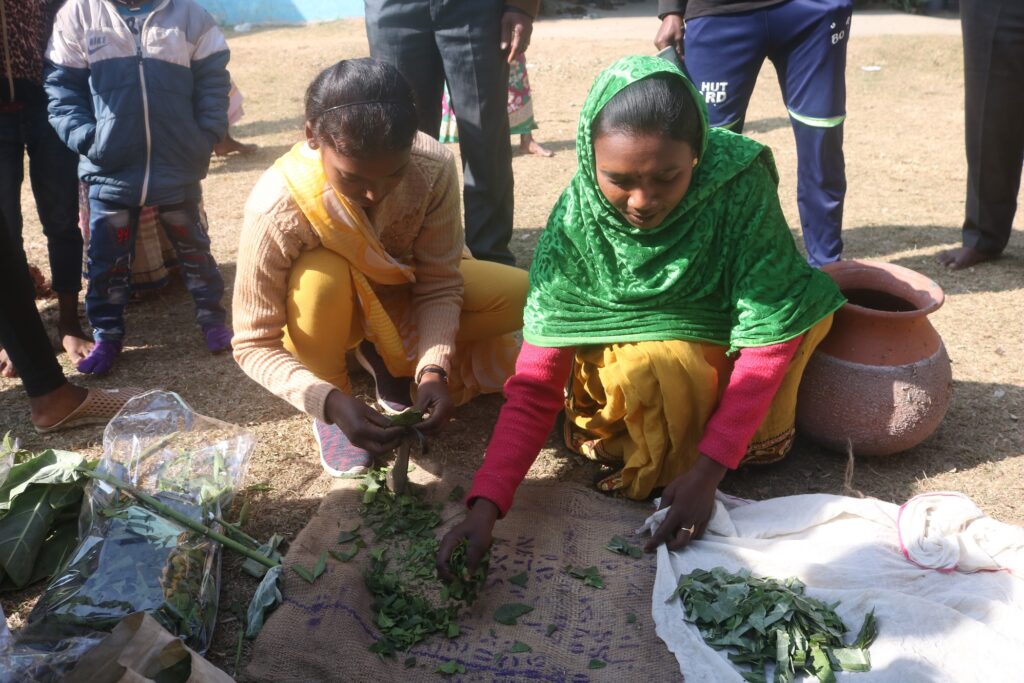
The final demonstration involved the preparation of Khatti Chhans ya Matha which is a made from sour curdled milk. This is used to address fungal, bacterial and viral infections and can be used on a monthly basis as a preventive.
The practical demonstrations were followed by a group exercise for participants. The participants were divided into 3 groups and asked to answer the following questions –
- What is the status of Agriculture in their areas?
- What are the challenges they face with regards to facilitating a switch to organic agriculture in their areas?
- What strategies will they look to employ to promote organic agriculture in their areas?
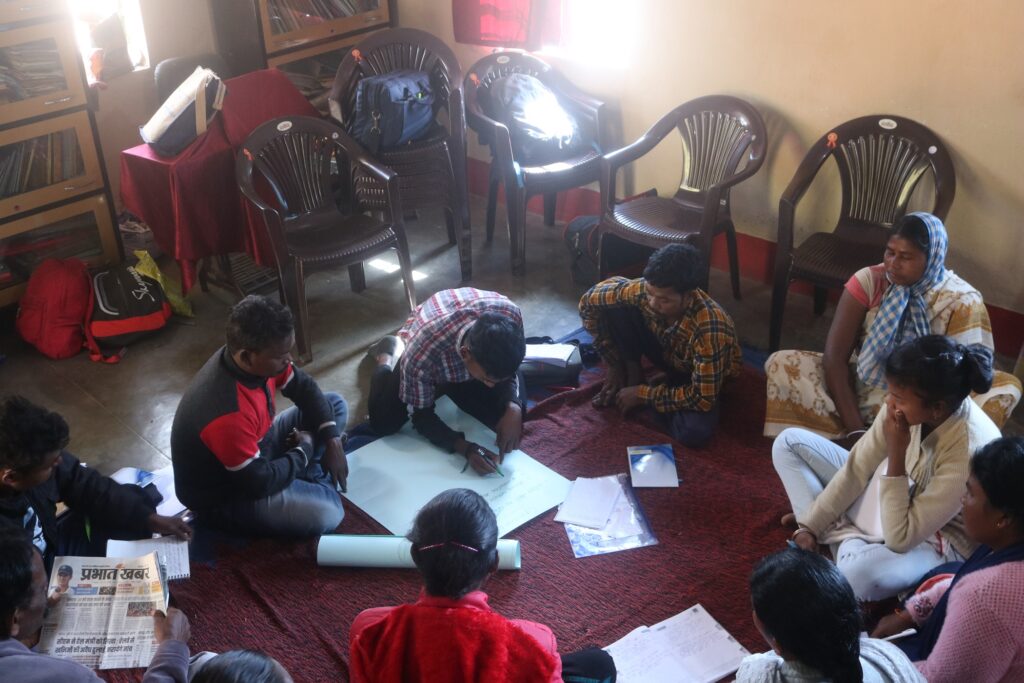
Some of the common features of the current status of agriculture across the different areas that the participants came from included –
- Ploughing of the land with tractors instead of bullocks and plough.
- Increase use of chemical fertilisers and pesticides
- Climate change is posing serious challenges to agriculture and negatively impacting agricultural productivity
- Increase in use of hybrid seeds and loss of local and traditional seeds
- Deterioration of soil as a result of excessive use of chemical fertilisers
Some of the challenge with regards to promoting organic agriculture were as follows –
- Availability of local and traditional seeds
- The perception that organic agriculture gives lower yields compared to chemical agriculture
- Reduction in livestock, primarily cows, buffalos, bullock and goats which makes it difficult to source manure, cow urine etc which is essential for preparation of several organic inputs.
- Migration of the youth making it hard for families to carry out agriculture and organic agriculture in particular.
Strategies for promoting organic agriculture included:
- Farmers meetings, trainings rallies, street plays and poster presentations
- Community seed banks
- Farmers groups to promote organic farming
- Including youth and children in the organic agriculture movement
- Learning from senior farmers.
- Sharing benefits of local and organic crops
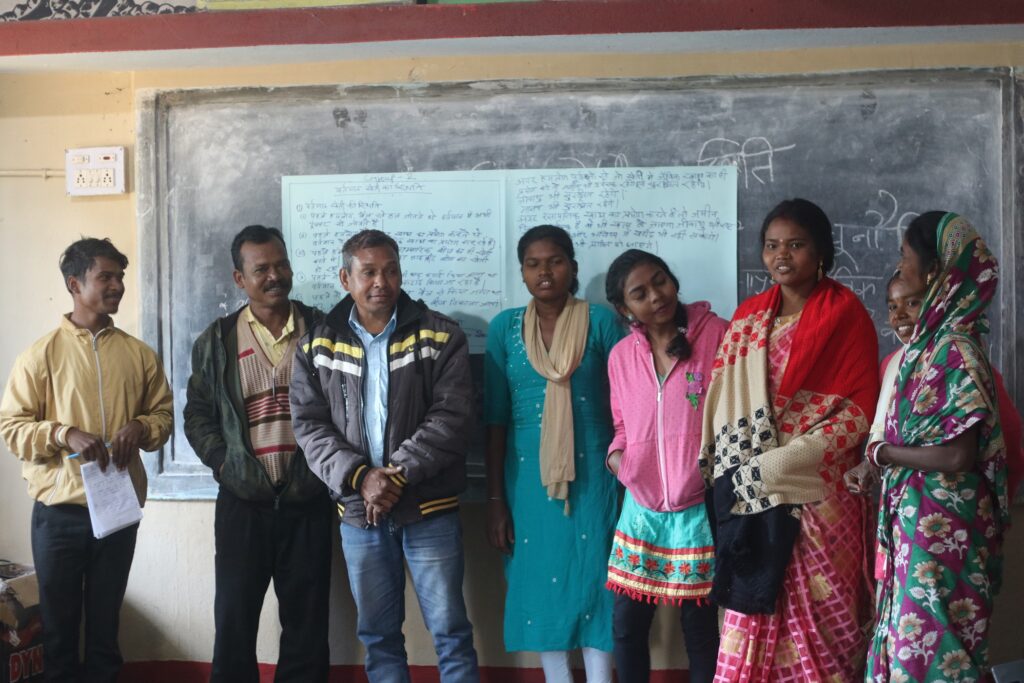
Soumik ended the training by emphasising that participants should not expect the shift to organic agriculture in their areas to be immediate. It would involve a slow and gradual process in the course of which they would need to work alongside and support farmers in their areas to make the transition. He also shared that this was not a one off training program and further modules were planned which would involve subjects like seed storage and management, other different kinds of organic fertilisers and pesticides, and irrigation methods. He advised the fellows and partner organisations to commence their efforts to promote organic agriculture in areas where chemical agriculture is yet to be completely ingrained. Initial successes in such areas could then be built on to promote interventions in other more challenging areas. He also said that all farmers may not be keen to prepare their own bio inputs even if they are keep to adopt organic agriculture. In order to overcome this stumbling block they could explore establishing Bio-input resource centres which could sell organic fertilisers, pesticides and other related products at affordable prices.
Ranjitha Lakra who was representing BIRSA, Noamundi shared that in her area no one is using organic fertilisers. If they face any problems with their soil the first thing they tend to do is to resort to the use of chemical fertilisers. She feels that compared to the past there aren’t as many cows and bullocks in the villages of her area. While a few households still have livestock there are many who don’t have any livestock which posses a challenge to creation of organic inputs. She liked this training a lot as she got to learn about how to encourage farmers to adopt organic practices. She really liked learning about the preparation and use of organic pesticides and pest repellents. In her area farmers buy and spray chemical pesticides but now she will go back and share about these organic pesticides with the farmers and explain to them how they can use these natural and organic pesticides to combat pests and diseases in their fields.
Chottu Sabar a farmer from Mirgichami Sabar Tola shared that he found the training very rewarding and that he would use the skills he learnt on his own lands to ensure better production through organic means. He also shared that he cultivates a variety of vegetables in his lands which include Brinjal, Chilli, Potato, Shim (Flat green beans), Lauki (Bottle gourd), Kumhra (Pumpkin). He also pointed out that he has been facing challenges with regards to diseases infecting many of his crops especially Brinjal and tomato. He would try some of the organic pesticides once he returns and looks forward to support from the PBKSKS and the network to address these challenges in the future.
Gauri Sardar a farmer and community fellow from Dokarsai village, Potka Block, East Singbhum District, Jharkhand shared that currently majority of farmers in her area have adopted chemical farming practices. Now after returning to her village, she will spread awareness about organic agriculture among farmers and villagers through meetings and Gram Sabha. She will look to promote cultivation of desi seeds in the future. They live in a forest area and she would like to first set an example by carrying out organic cultivation herself and then she will use her example to encourage other farmers to adopt organic farming practices. She wishes to ensure that they can ensure that they can safeguard the health of the soil and subsequently the health of humans and other living beings continuously from one generation to the next.
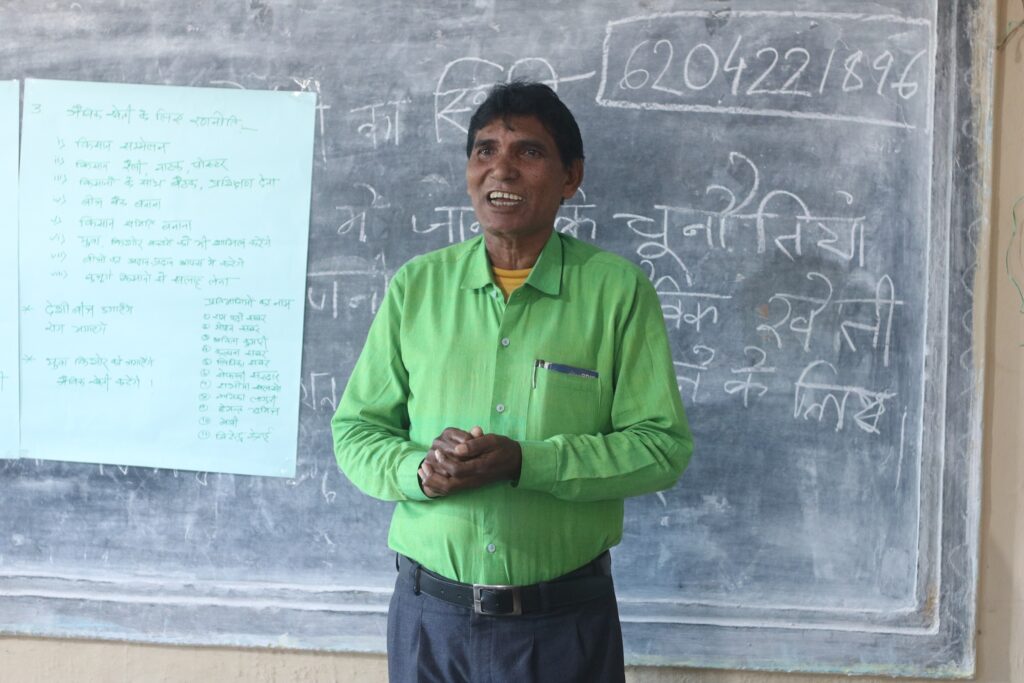
The event concluded with a voted of thanks from Bibhishan Bhumij, the secretary of PCK who urged the participants to experiment with what they had learned in their own areas and build on it to promote and support the organic agriculture movement in their regions.

